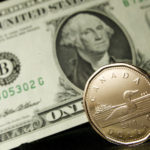 Gold continued to trade on positive territory, remaining fairly unchanged after the U.S. Department of Labor reported that more people filed for initial unemployment payments last week than the preceding one.
Gold continued to trade on positive territory, remaining fairly unchanged after the U.S. Department of Labor reported that more people filed for initial unemployment payments last week than the preceding one.
On the Comex division of the New York Mercantile Exchange, gold futures for December delivery traded at $1 294.60 per troy ounce at 13:53 GMT, up 0.72% on the day. The precious metal traded higher throughout the day on speculation that a weak initial jobless claims data may cause the central bank to delay the tapering of its bond purchasing program. Prices held in range between days high and low of $1 296.50 and $1 282.20 an ounce respectively. The contract surged 0.22% on Wednesday, trimming its weekly decline to 1.2% after settling 1.66% lower the previous week.
The U.S. Department of Labor reported at 12:30 GMT that the number of people who filed for initial jobless benefits rose by 5 000 to a seasonally adjusted 333 000 in the week ending August 3. The previous weeks reading was revised upward by 2 000 from 326 000. Last weeks figure however outperformed analysts expectations for an increase by 8 000 to 336 000.
The projections for a rise and the confirmation laid pressure on the U.S. dollar, which trades inversely to dollar-denominated commodities. Weakening of the greenback makes such raw materials cheaper for foreign currency holders and boosts their appeal as an alternative investment. The dollar index, which tracks the dollars performance against six major counterparts, fell to 81.12 at 13:55 GMT, down 0.23% on the day. It fell to 81.11 after the jobless data was released, the lowest since June 18, while day’s high stood at 81.40. The U.S. currency gauge slipped 0.45% on Wednesday, a fourth consecutive daily decline, and extended current week’s fall to 1.1% after advancing 0.3% the preceding five-day period.
Nevertheless, gold gains remained limited on indications by high ranking Fed representatives that the central bank may taper its monetary easing program later this year and possibly after FOMCs September meeting. Fed Bank of Chicago President Charles Evans, who was one of Quantitative Easing’s supporters, said on Tuesday that there has been a “good improvement” in the labor market and indicated the central bank’s monetary easing program might be decelerated in September. FOMC’s next meeting is scheduled for September 17-18 when policy makers will review their assessment on the economic recovery pace.
Earlier in the week, Federal Reserve Bank of Dallas President Richard Fisher, one of Quantitative Easing’s critics, commented that the central bank is getting closer to tapering the monetary easing program. He said in a speech in Portland, Oregon: “Financial markets may have become too accustomed to what some have depicted as a Fed ‘put. Some have come to expect the Fed to keep the markets levitating indefinitely. This distorts the pricing of financial assets” and can lead to “serious misallocation of capital.”
Atlanta Fed president Dennis Lockhart made similar comments and Cleveland Fed President Sandra Pianalto said on Wednesday the central bank will consider reducing bond purchases if the labor market continues to improve. According to a Bloomberg survey of analysts last month, fifty percent of the 54 economists expect Fed to taper its Quantitative Easing program in September.
Their opinions were backed by upbeat U.S. data earlier in the week, which offset Fridays poor Non-Farm Payrolls data for July. The ISM reported on Monday that the U.S. services sector rose with a lot faster pace in July than in June, hitting a five-month high. The ISM Non-Manufacturing Composite index surged to 56.0, well above analysts’ expectations for a jump to 53.1 from June’s 52.2 figure. Sixteen out of eighteen sectors that are tracked for the preparation of the index have marked an expansion in July, compared to fourteen in June. This boosted the U.S. economy’s recovery prospects, spurring speculation Quantitative Easing may after all be tapered in September, as many analysts project.
On Tuesday, The Commerce Department reported at that the U.S. trade deficit narrowed in June to $34.220 billion, exceeding analysts’ forecast for a drop to $43.5 billion from May’s downward revised reading of $44.1 billion. Statistics showed that U.S. exports rose by 2.2% to $191.2 billion, while imports decreased by 2.5% to $225.4 billion.
Gold has fallen around 24% this year on speculation the Federal Reserve will trim its bond purchasing program in the second half of the year and bring it to an end by mid-2014. The metal is used mainly as a hedge against inflation, which accelerates when a central bank eases money supply. An exit from a program such as Quantitative Easing would deliver a heavy blow to gold’s price as its demand will crumble. According to a Bloomberg survey of analysts last month, fifty percent of the 54 economists expect Fed to taper its Quantitative Easing program in September.





